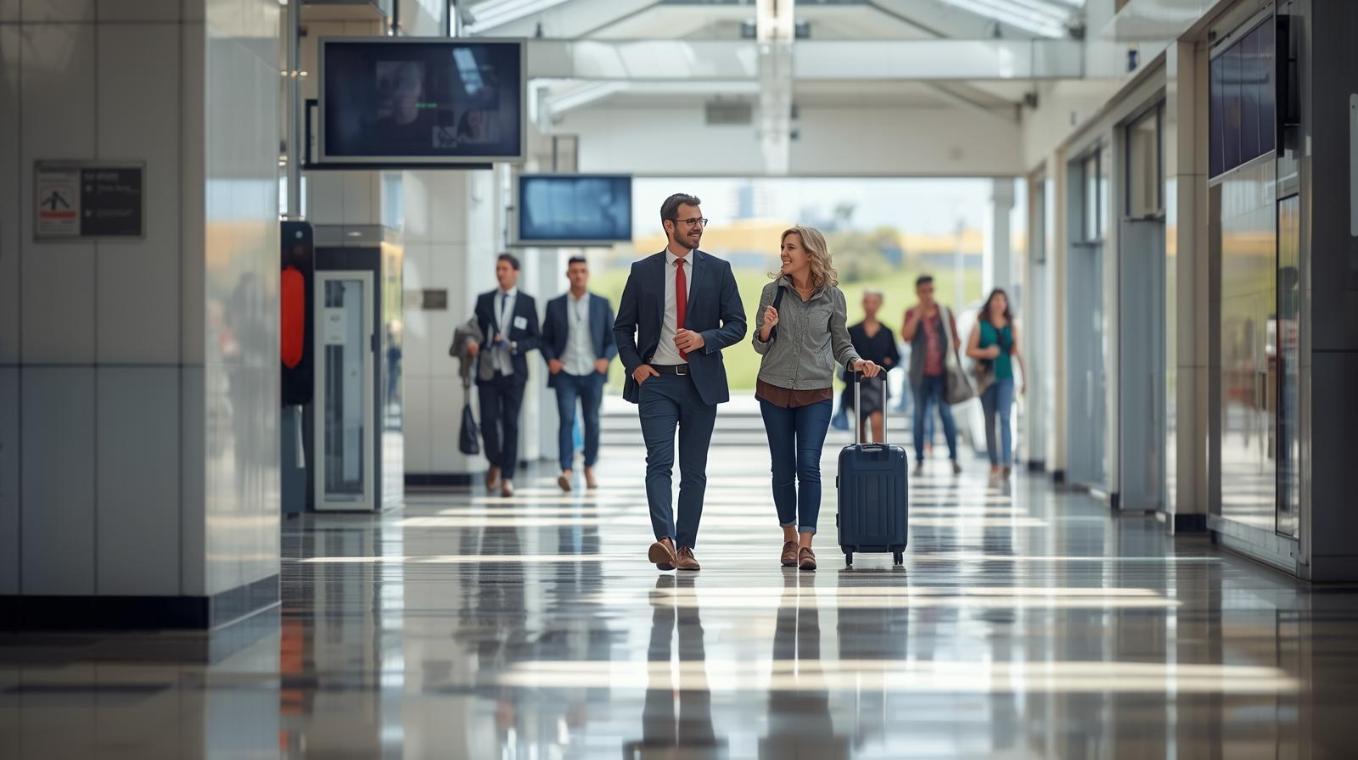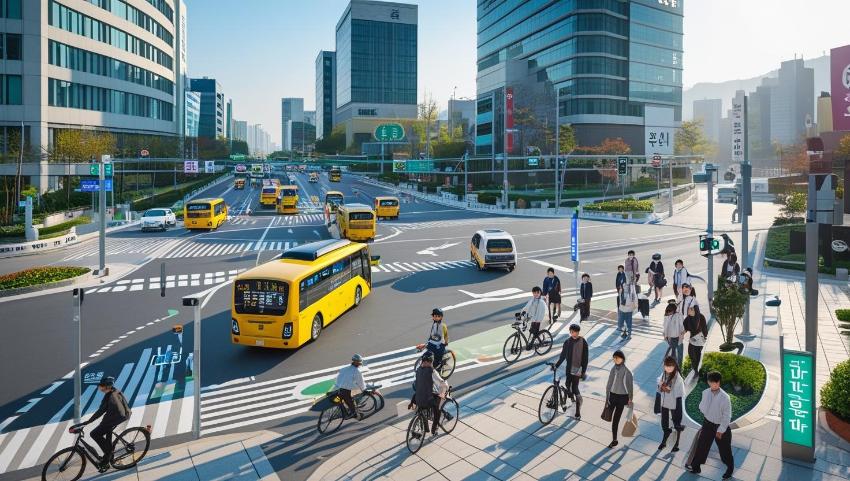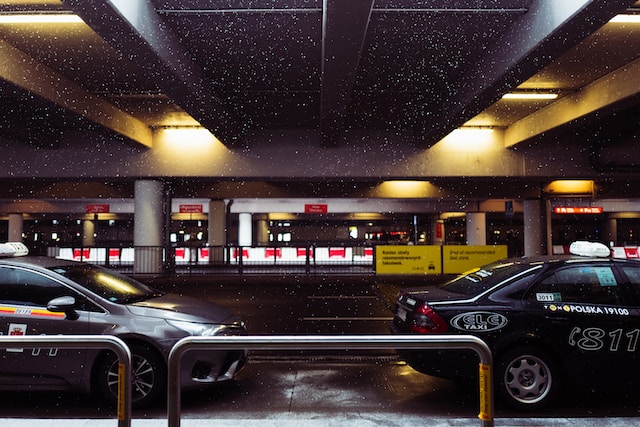Ministry of Rail Transportation is a blogging site about Transportation.
Read MoreA Brighter Commute How Brisbane’s Transit Hubs Showcase the Power of Spotless Tiles

In addition to buses, trains, and ferries, Brisbane’s transport system also involves the pedestrian paths commuters navigate each day. From platforms to crowded terminals, the upkeep of these regions impacts the attitudes and sentiments people possess about their travel.
Nowhere else is this fact clearer than in the gleaming tiled surfaces that are the first to greet commuters. For many, the best tile cleaning in Brisbane is proof that these public areas embody the city’s promises of comfort, squeaky cleanliness, and public pride.
Clean Tiles as a Reflection of City Pride
Terminals associated with a structure known as a train station typically house devices like trains and buses. When a person arrives in this location, the first thing that captures their attention is the vicinity—this is the area that is regarded as the terminal’s ‘serviced’ space.
Usually, people are quick to conclude the terminal’s space is clean. Tiles that are shiny and well kept provide an impression of order and safety, suggesting to the commuters that the city actually anticipates their everyday activities. In an active city like Brisbane that has a tremendous volume of commuters per day, the presence of clean, sparkling tiles, while insignificant, proves that the ‘little’ things are actually quite substantial.
The Impact of Cleanliness on Commuter Comfort Perception
Indeed, studies indicate that public perception of any transport network is often based on what is visible and how clean it is. For some residents in Brisbane, the sight of clean tiles on footpaths offers some relief when traveling in crowded settings and helps create a more pleasant ambiance.
When facilities are clean, perceived personal security is higher, and people are more likely to use buses, trains, and ferries on a regular basis. It is not simply a matter of public hygiene but also confidence and systemically robust public transport.
ALSO READ: Mapping the Future of Smart Mobility Through Korea’s Unified Collection of Addresses
The Other Side of the Coin
A visible aspect of the commuter experience is the perception of clean tiles and the effort involved in their maintenance. It includes the platform, the stairs, and any standing circulation space. The grout and tile surfaces are considered to be the highest hygiene risk space, so they are maintained to a specialist standard.
Teams of professionals with industrial-strength cleaning aids that are slip-proof, stain-proof, and bright to the eye work on the floors of the stations after hours. Their work not only enhances the aesthetics but also the public safety and, in turn, the safety of the maintenance staff. The overall maintenance expenditure gets reduced long-term.
A Cleaner Path to the Future
The increasing importance of transportation within the core of the city, along with the new Brisbane investments in new rail lines, terminal capacity, modern infrastructure, and new real estate projects, will all improve the image of the city but will also underscore the need for much more maintained public spaces.
The need for public toilets for commuters and other users of the transportation systems is no longer an issue. The bright, polished tiles within the toilets are a clear sign of the city, public toilets, and public spaces. It is a clear signal for the commuters and the tourists to understand and appreciate.
Conclusion
The tiles stand as Brisbane’s central transport hubs with their simple but immensely public experience enhancing aesthetics. Every step taken on those bright, polished surfaces reflects the city’s focus on commuter wellness.
Anyone visiting the city, commuters with a ‘to go’ spirit, and workers in the middle of a workday will appreciate the smile they’re surrounded with. Brisbane has made the simple yet often missed concept clear, The focus is not only on moving people but also on improving the experience and the daily life they have to navigate.


 Make sure it is genuine: Ensure that the suppliers you choose do not breach Instagram’s standards when it comes to offering followers.
Make sure it is genuine: Ensure that the suppliers you choose do not breach Instagram’s standards when it comes to offering followers. Digital nomad visas are changing the way people live and work. They allow remote workers to stay in a foreign country legally for several months, sometimes even longer. While the focus is often on where to go and how to apply to https://www.whywaititaly.com, transportation is just as important. Getting around your host country easily can shape your whole experience.
Digital nomad visas are changing the way people live and work. They allow remote workers to stay in a foreign country legally for several months, sometimes even longer. While the focus is often on where to go and how to apply to https://www.whywaititaly.com, transportation is just as important. Getting around your host country easily can shape your whole experience.


 According to industry experts the best method of towing is by using the appropriate type of towing truck when performing tow jobs. It’s important therefore that towing company managers and dispatchers are knowledgeable not only about different types of tow trucks; but also of the emergency situation or recovery condition of vehicles needing roadside assistance. The following provides a quick look at the types of towing equipment used by tow service providers:
According to industry experts the best method of towing is by using the appropriate type of towing truck when performing tow jobs. It’s important therefore that towing company managers and dispatchers are knowledgeable not only about different types of tow trucks; but also of the emergency situation or recovery condition of vehicles needing roadside assistance. The following provides a quick look at the types of towing equipment used by tow service providers:









 Using an RV cover is essential to protect your investment. It helps keep your RV in good shape for years to come by shielding it from weather elements, UV damage, and general wear and tear.
Using an RV cover is essential to protect your investment. It helps keep your RV in good shape for years to come by shielding it from weather elements, UV damage, and general wear and tear.






 The daily commute can be a source of stress and frustration for many people. Whether you’re sitting in traffic, navigating crowded public transportation, or enduring a long and boring drive, it’s easy to feel anxious and unhappy
The daily commute can be a source of stress and frustration for many people. Whether you’re sitting in traffic, navigating crowded public transportation, or enduring a long and boring drive, it’s easy to feel anxious and unhappy 


 Every logistic coordinator participating in the supply chain network, takes on the responsibility of arranging time, space and resources to ensure that the goods in process of delivery will not lose value upon reaching each destination.
Every logistic coordinator participating in the supply chain network, takes on the responsibility of arranging time, space and resources to ensure that the goods in process of delivery will not lose value upon reaching each destination. A logistics coordinator will also be in charge of monitoring the status, progress,
A logistics coordinator will also be in charge of monitoring the status, progress,  Yet if the job position posted is for a higher level logistics coordinator position, an applicant must also have proven experience not only in coordinating transport, delivery and storage of goods, but also in rendering effective customer service. Moreover, he or she must be able to perform work with little or no supervision at all, by having adequate knowledge of ISO requirements and relevant supply chain laws and regulations. The ability to multi-task or to supervise multiple logistics coordinators in the performance of their specific task is a plus factor.
Yet if the job position posted is for a higher level logistics coordinator position, an applicant must also have proven experience not only in coordinating transport, delivery and storage of goods, but also in rendering effective customer service. Moreover, he or she must be able to perform work with little or no supervision at all, by having adequate knowledge of ISO requirements and relevant supply chain laws and regulations. The ability to multi-task or to supervise multiple logistics coordinators in the performance of their specific task is a plus factor. Public
Public 

 Twitch is a live streaming platform where gamers live broadcast their video game gameplays and where esports competitions are streamed live as well. While Twitch focuses on gamers and video games, the platform has now also opened its doors to music, creative contents, and “in real life” broadcasts. However, regardless of which category you belong to, it is important for you to have views and followers for your content to get noticed, which may increase your views and followers even more.
Twitch is a live streaming platform where gamers live broadcast their video game gameplays and where esports competitions are streamed live as well. While Twitch focuses on gamers and video games, the platform has now also opened its doors to music, creative contents, and “in real life” broadcasts. However, regardless of which category you belong to, it is important for you to have views and followers for your content to get noticed, which may increase your views and followers even more.